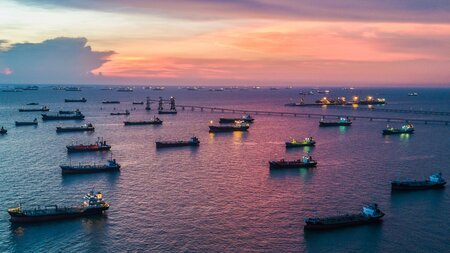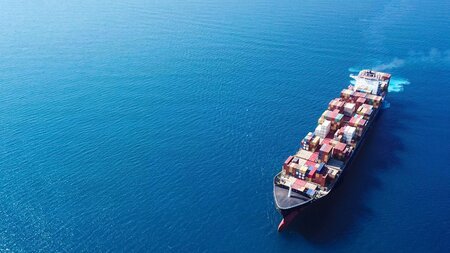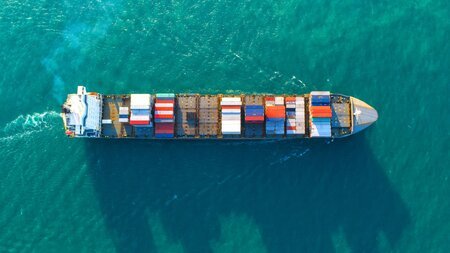船舶より排出される温室効果ガス(GHG)の削減は世界的な懸念事項となっており、代替燃料への転換を促すことを目的とした規制が次々と導入されています。国際海事機関(IMO)は現在、中期対策と呼ばれる新たな規制について議論しており、2025年に承認され、2027年に施行される予定です。さらに欧州連合(EU)は、EU排出権取引制度(EU-ETS)の対象部門を拡大し、2024年より海運部門が含まれることになりました。船舶燃料の脱炭素化をさらに推進するため、2025年にはFuelEU Maritimeが導入され、ライフサイクルベースでの温室効果ガス排出量に焦点を当て、船上で使用される燃料の温室効果ガス強度を段階的に削減します。本稿では、代替燃料の選択肢、安全なオペレーション、安全運航におけるギャップへの対処、緊急時の備え、汚染リスクへの対処、取扱いにおける契約、当クラブにおける代替燃料への転換にかかるメンバーへの支援などについて説明しています。
Reducing greenhouse gas (GHG) emissions from ships has become a global concern, prompting the introduction of successive regulations aimed at driving change. The International Maritime Organization (IMO) is currently discussing new regulations, known as mid-term measures, expected to be finalised in 2025 and enforced in 2027. Additionally, the European Union has expanded the Emissions Trading System (EU-ETS) to include the maritime sector starting in 2024. In 2025, FuelEU Maritime will be introduced to further drive the decarbonisation of shipping fuels, focusing on lifecycle emissions, and progressively reducing the GHG intensity of the fuels used onboard.
These initiatives represent a concerted effort to decarbonise shipping fuels. Consequently, the regulations set by the IMO and the EU are anticipated to gradually increase the costs associated with regulatory compliance related to GHG emissions, thereby promoting the transition to zero- or low-emission fuels.
Alternative fuel options
The landscape of alternative fuels presents a range of options promising reduced or zero carbon emissions. The range includes carbon-based fuels such as LNG, LPG, biofuels, as well as zero carbon fuels such as hydrogen, ammonia, and even nuclear power, each offering pathways to achieve net-zero emissions dependent on the primary energy source. As of now, LNG has emerged as a dominant alternative fuel, accompanied by increasing orders for vessels fuelled by methanol and the utilisation of drop-in biofuels.
However, proclaiming a definitive winner in the fuel race remains premature. The journey towards fuel technology maturity will unfold gradually, influenced by considerations such as safety, fuel availability, infrastructure expansion, and lifecycle emissions; some fuels may have an important role to play as transition fuels, whilst other fuels may prove to be long-term solutions but take longer to realise. The complexity of fuel selection is also influenced by factors including ship type, size, route, and the respective e-fuel or synthetic fuel cost projections.
It is also essential to recognise an intermediate phase in the energy transition focused on emissions management, which will run parallel with the development of alternative fuels, incorporating strategies like carbon capture and other technological and operational options to reduce energy use, pricing mechanisms, and trading of credits and offsets acting as an indispensable bridge in the transition process. These new fuel and technological advancements necessitate a paradigm shift in onboard systems and machinery, posing new challenges in training, firefighting, pollution prevention, and enhanced problem-solving skills.
Safe operations
Ensuring the safe operation of alternative fuels such as methanol and ammonia requires robust safety management procedures and well-trained personnel on board ships. Achieving a balance between emissions reductions and safety standards is crucial but complex. While pursuing decarbonisation goals is essential, it must never come at the expense of crew safety. Therefore, the training and preparedness of our crews, along with the built and design standards of our ships, are fundamental components of the future fuel conversation. A lack of awareness about the risks associated with new alternative fuels can lead to overlooked emergency scenarios or insufficient Safety Management System (SMS) procedures.
Addressing the gaps in training
To accelerate safe maritime decarbonisation, it is necessary to address the significant gaps in the safe operation of alternative fuels. These gaps encompass safety management, crew training, and the cultivation of a robust safety culture. Closing these gaps is essential to ensure that the transition to alternative fuels is both effective and safe.
However, the uncertainty surrounding the dominant fuel and associated technologies of the future poses a challenge. This uncertainty leads to a lack of commercial incentive for developers to create comprehensive training courses for all potential alternative fuels in advance. Despite this, it remains imperative to prioritise the development of these training programmes to safeguard the industry’s move towards a greener future (Operational Management to accelerate safe maritime decarbonisation, Maritime Technologies Forum, 2023).
Emergency preparedness
The behavioural variability of alternative fuels such as hydrogen, methanol and ammonia brings significant health and safety risks, including fire and explosion hazards, toxicity, corrosivity, cryogenic damage, and asphyxiation. These dangers pose serious threats to the ship’s crew, bunkering and port operators, and spill responders, potentially leading to severe injury or death. Therefore, an effective spill response is required to mitigate these safety risks. It is essential that contingency and emergency response planning are developed in tandem to ensure comprehensive preparedness and protection for all personnel involved.
Pollution Prevention and Liability
Traditionally, oil spill clean-ups in the shipping industry have focused primarily on petroleum-based products. Only recently has attention expanded to include hazardous noxious substance response. As the shipping industry embarks on its decarbonisation journey and introduces volatile alternative fuels to the global fleet, spill response preparedness must adapt accordingly. This shift is critical to address the unique challenges and risks posed by these new fuels (Masurier, 2024).
Liability issues will inevitably arise following spills involving gaseous alternative marine fuels such as LNG, ammonia, and hydrogen. It is crucial to establish a robust liability and compensation regime that considers the numerous factors influencing the settlement of pollution damage claims, whether judicial or otherwise. Shipowners currently benefit from the 2001 Bunkers Convention, which provides compulsory insurance, channels liability, and allows for the right to limit liability in the event of a bunker spill. However, this applies only to “bunker oil,” defined as hydrocarbon mineral oil. Additionally, the 2010 HNS Convention, which has yet to come into force, addresses personal injury and pollution damage arising from the carriage of hazardous and noxious substances (HNS) as “cargo”.
However, there is a noticeable gap in the liability and compensation regime for damage caused by gaseous marine fuels. If this gap in international law persists, issues related to the use of gaseous marine fuels will likely be governed by a patchwork of domestic laws. This fragmentation would create unnecessary uncertainty for shipowners and pollution victims seeking recourse. Establishing a comprehensive international regime for these fuels is essential to ensure clarity and consistency in addressing pollution damage claims (Xu, Testa, & Mukherjee, 2017).
Contractual clarity
Furthermore, amid evolving regulations, disputes may arise between contractual parties when roles and obligations are unclear. As the industry navigates the challenges of emissions management, the European Union’s Emissions Trading System (EU-ETS) and the upcoming FuelEU Maritime regulations are key focal points. These developments necessitate the inclusion of suitable clauses in agreements to ensure contractual enforceability. Additionally, considerations regarding design risks stemming from new technologies and retrofits further underscore the need for well-defined agreements. Properly drafted contracts are essential to address these complexities and prevent conflicts.
Collaborations and Partnerships
Through strategic partnerships, the UK Club aims to assist its members in their decarbonisation efforts, promoting sustainable operations as regulatory environments evolve and new alternative fuel options emerge. For example, the UK Club is a member of the Methane Abatement in Maritime Innovation Initiative (MAMII), which is an initiative dedicated to advancing technologies that monitor, measure, and mitigate methane emissions within the maritime sector. MAMII aims to establish methane-free maritime and bunkering supply chains, create certification frameworks, and support sustainability goals and regulatory compliance. The UK Club’s collaboration with MAMII underscores a shared commitment to developing real solutions to the real challenges of methane measurement, abatement, and certification guidelines within the maritime industry.
The UK Club’s most important partnership is with its Members, and the Club is engaging with its Members in relation to numerous specific innovations designed to reduce emissions such as our recent engagements with our Members exploring wind-assisted propulsion solutions. The Club plays an important role in enabling those shipowners and operators who are exploring new technologies to cut their emissions, by working together to mitigate and avoid the risks of the new technologies through the Club’s Safety and Risk Management provision, and ultimately by providing insurance to respond if something does go wrong.
In conclusion, navigating the transition towards decarbonisation in maritime operations demands a multifaceted approach, encompassing regulatory compliance, technological innovation, collaborative agreements, and a shared commitment to sustainability. As the industry evolves, clear communication, transparent data sharing, proactive engagement with stakeholders and regulatory frameworks will be vital in shaping a greener, more sustainable future for international shipping.




